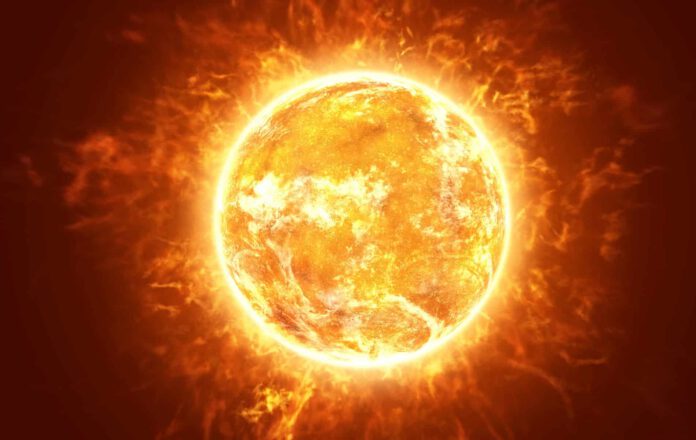
When one typically thinks of the sun, it conjures up images of a giant flaming, blazingly hot sphere. But there’s much more to observe on the surface of this celestial body, which lights and heats up our planet every day. A unique video from the European Space Agency suggests it closely resembles a yellow, grassy field dotted with fluffy feathers.
The intriguing perspectives from the Solar Orbiter
The footage was captured by the European Space Agency’s Solar Orbiter on September 27th last year, approximately a third of the distance between the Earth and the sun. This close-up view allows us to see hair-like structures, composed of plasma – a flow of charged gas particles – that follow the magnetic field lines in the sun’s lower atmosphere, transitioning into the much hotter outer corona. The brightest spots reach an awe-inspiring temperature of up to 1 million degrees Celsius, while cooler regions appear darker as they absorb radiation.
The amazing video can be viewed below:
Unseen celestial phenomena
In the video, we can observe elements rarely seen before, such as coronal moss, spicules, and coronal rain. The corona is the sun’s (and other stars’) hot atmosphere that can stretch millions of kilometers. It is ordinarily invisible, and you can only see it during a solar eclipse. Interestingly, the corona is hotter than the sun’s surface itself. The so-called photosphere (the deepest layer of a star’s atmosphere) is around 5700 degrees, while the corona can reach almost a million degrees. The mystery of how this is possible remained unanswered for a long time. One explanation could be that the corona retrieves energy from magnetic fields in the more active parts of the sun, which emit energy.
The fluffy outlook of the sun, coronal moss
Coronal moss gives the sun its fluffy appearance. It resembles terrestrial moss, hence the name. Although, on the sun, it’s not in the forest, but around sunspot groups’ centers, where the magnetic fields are the strongest. The moss is so hot that most instruments cannot detect it, and it is found in two atmospheric layers: the chromosphere (the layer between the photosphere and the corona) and the corona itself.
Gas columns, Spicules
On the other hand, Spicules resemble tall pillars of gas that can be seen on the horizon and emerge from the sun’s chromosphere. They can reach up to 10,000 kilometers in height and often exist near sunspots. Like everything else observed on the sun, these spicules are immensely large. Their diameter ranges from hundreds to thousands of kilometers and can illustrate speeds of up to 70,000 kilometers per hour.
The relaxation in chaos, Coronal Rain
Finally, around the 30th second in the video, you can observe coronal rain. This material, with less than 10,000 degrees, is substantially cooler than the rest of the surface. The rain consists of denser clumps of plasma that, influenced by gravity, fall back to the sun. At the 20-second mark in the video, you will also observe an eruption in the middle of the picture. This eruption is cooler material being tossed up into the sky, with most of it then falling back down. Although the eruption seems small, it is, in fact, larger than the Earth itself.











